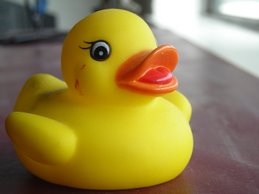In trying to answer the question “what is poetry?” I realized that you must start at a macro level. Poetry is made up of words arranged in a certain order. So, what are words, and how do they work? Well, at the most basic level, words are the foundation of our language. On a different level, however, words are far more complex than just the building blocks of communication.
First, words are, as Zukofsky suggests, objects. They take up space on paper. When written, they allow us to see a physical representation of a concept that is not readily available. For example, I might write “I saw a dog walking down the street.” Writing down those words allows me to somewhat accurately communicate my experience with the dog without having to express it orally. If we didn’t have words to write, you wouldn’t know about the dog unless I had drawn you a picture. This, of course, is difficult because not all of us are artistically inclined. Therefore, the written word allows us to share our experiences and ideas with people that we cannot speak with directly.
In addition, words are sounds. Even when written, we hear the sound that the word makes. This is especially important in poetry, as sound is a key element. Disregarding the word’s meaning, arranging word-objects together can create a pleasing sound. This sound is often just as important (if not more) as the meaning behind the words’ arrangement. Paying attention to this sound makes the written word much more sensual. You see the physical word, you hear the sound it makes, and you also interpret the meaning behind each word or phrase.
Looking beyond the word as an object, the word is also a name. This, of course, is the main goal of a word. Although it may seem obvious, we often forget to separate out a word from that which it is trying to represent. This is important, because, as Stein proposes, a word is a completely different object than what it is describing. By itself, the word dog isn’t a dog. You won’t see the letters d-o-g walking down the street (hopefully). In this way, words can never be completely accurate. For example, when I wrote the word dog, we all have a vague idea about what is and isn’t a dog. We know that a dog is a mammal, and that it isn’t a hamster. However, you will never fully be able understand my specific dog unless you see it for yourself. This makes words frustratingly imperfect. However, they are significantly better than the alternative, because we cannot all share the exact same experiences.
In an attempt to combat this inaccuracy, we string words together to form sentences and paragraphs, etc. These larger collections of words act as a sort of lens to help us focus on the finer details of a concept. For example, when describing my dog, I might inject the words brown and smelly into the equation. In this way we are, according to Bernstein, “limiting the interpretations of each word’s meaning by creating an ever more specific context.” This allows you to narrow down your ideas about my dog into only those who are brown and smelly.
This brings me to a discussion about the conceptual relationship between words. For each word, we have a web of interrelated words that are inextricably linked to the original word. Indeed, given this logic, there is no such thing as one word. In addition, everyone’s word web is different. We might say that for each of our concepts we have a prototype. Take the word dress. When you hear that word, you will immediately see an image of what you consider to be dress-like. Perhaps you might picture the big, blue, poofy dress that you wore to prom. I, on the other hand, might picture a short, pink cocktail dress. Therefore, when I am given the word dress, I almost immediately bring up the concepts pink and short. You, on the other hand, will bring up the concepts blue and poofy. Now that we’ve established that my dress is pink, we might begin to focus on the pink concept. What sort of pink is my dress? Magenta? From magenta we may think of our new magenta leg-warmers, and so on.
Part of the inaccuracy of our language may be due to the fact that our words are interrelated rather than isolated. Take, for example, the word car. If, when seeing the word car, we had the ability to extract only the minimal, universal car concept (four wheels, etc.), and look no further than c followed by a followed by r, we might have a simpler time trying to communicate. This, of course, is impossible. As soon as we see car our minds become full of different colors, makes and models. With all the possibilities that a single word can bring, it is no small wonder than we can communicate at all.

No comments:
Post a Comment